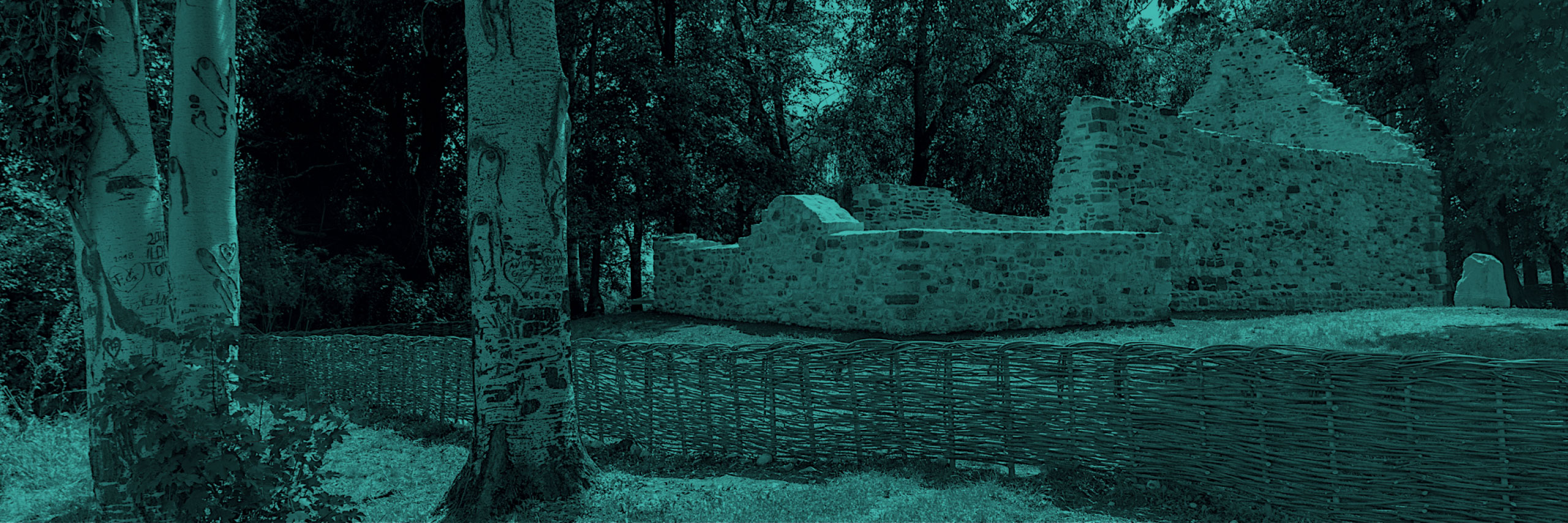N 46° 55’25.6” E 17° 49’59.1”
The second stop of the RUIN Rover programme is the Kövesd church ruins, located on the shores of Lake Balaton, on the outskirts of the village of Aszófő, surrounded by a grove of trees, green nature reserve. With its panoramic view of Lake Balaton, the cultivated landscape of the countryside, the model-like railway station and the poplar-lined access road, visitors will find a fairytale place with a fairytale story to tell. The 13th-century church, which has seen its fair share of adversity, is unique in that its walls are built on a Roman villa.
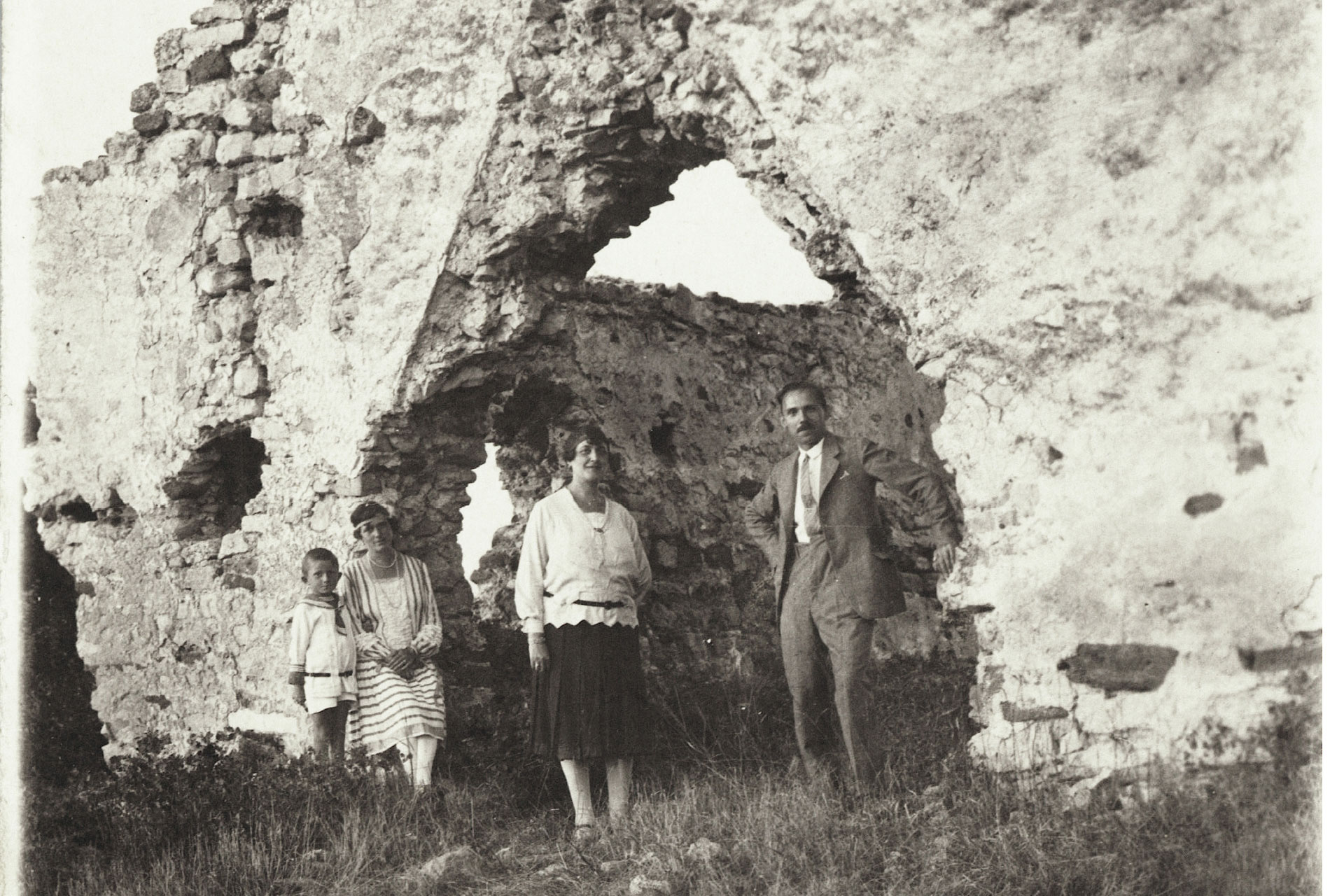
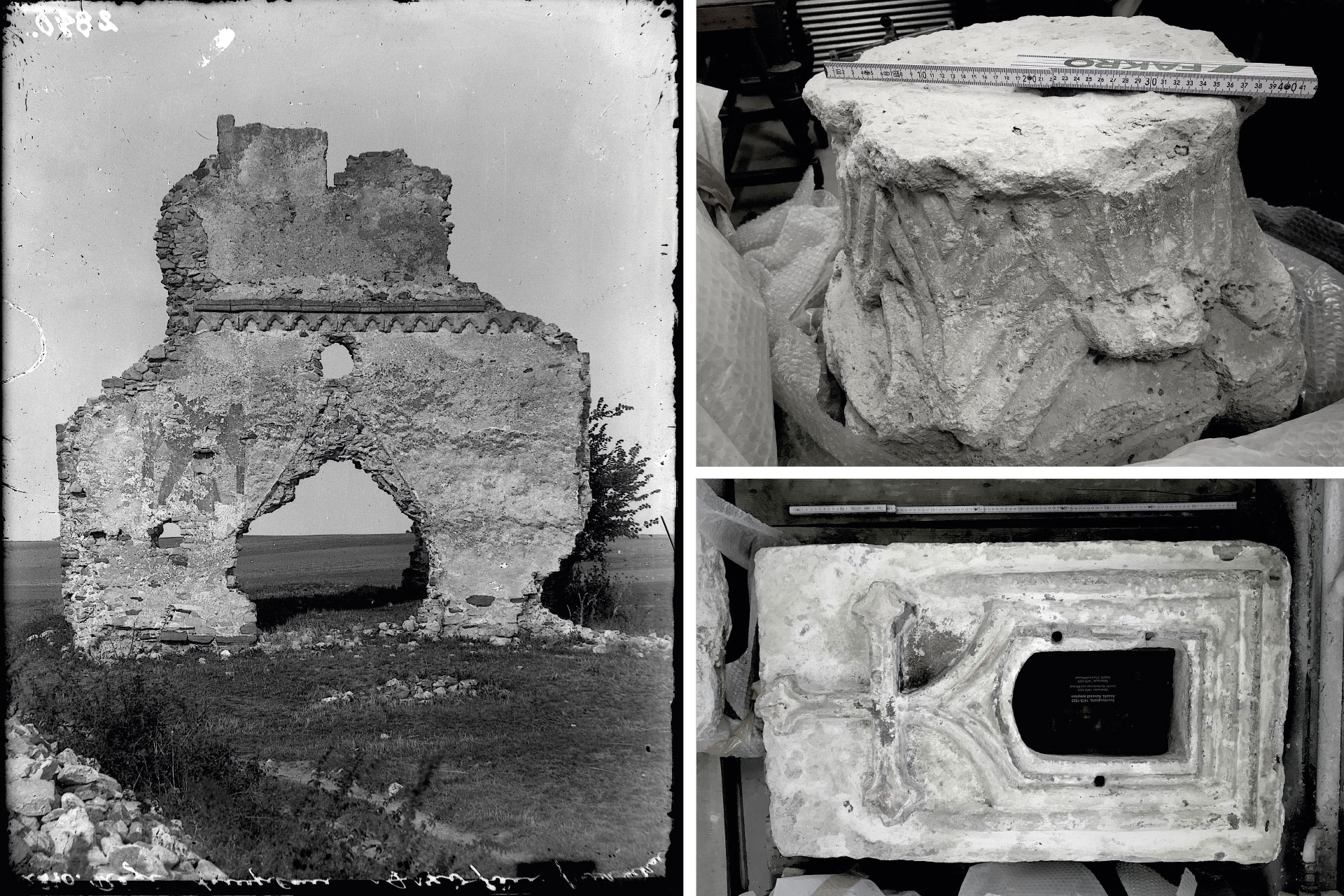
Ruin history
It can be assumed that the now ruined settlement of Kövesd was named after the stony area of Roman buildings between Aszófő and Örvényes, which was probably ruined in the Árpád period. The church ruin is the remains of the settlement’s Romanesque, single-nave, apseless, east-oriented, sacristy church, built around 1260. With its elaborately carved ornamentation, it is of outstanding value among the village churches. The main façade of the sacral building, which has been rebuilt over several architectural periods, was once decorated with a fresco of Saint Christopher, the patron saint of travellers, as mentioned by Flóris Rómer. In 1552, during the Turkish campaign, the settlement of Kövesd was destroyed along with the church.
The triangular imprint of the once ornate door with embrasures of the church can still be seen on the wall fabric, with a round window above it. Also on the main façade, a large part of the original arcature with pointed arches and scalloped cornices has been preserved, which probably ran around the façades of the building. In 1958, the ruin was conserved with minor additions under the guidance of architect Dr. Mihály Zádor and with the involvement of university students, and has not been restored since then. During the excavations at that time, the sacristy niche and the original cover stone of the side altar were found; the latter was put back in its place and the Roman altar stone from the area was also found at that time.
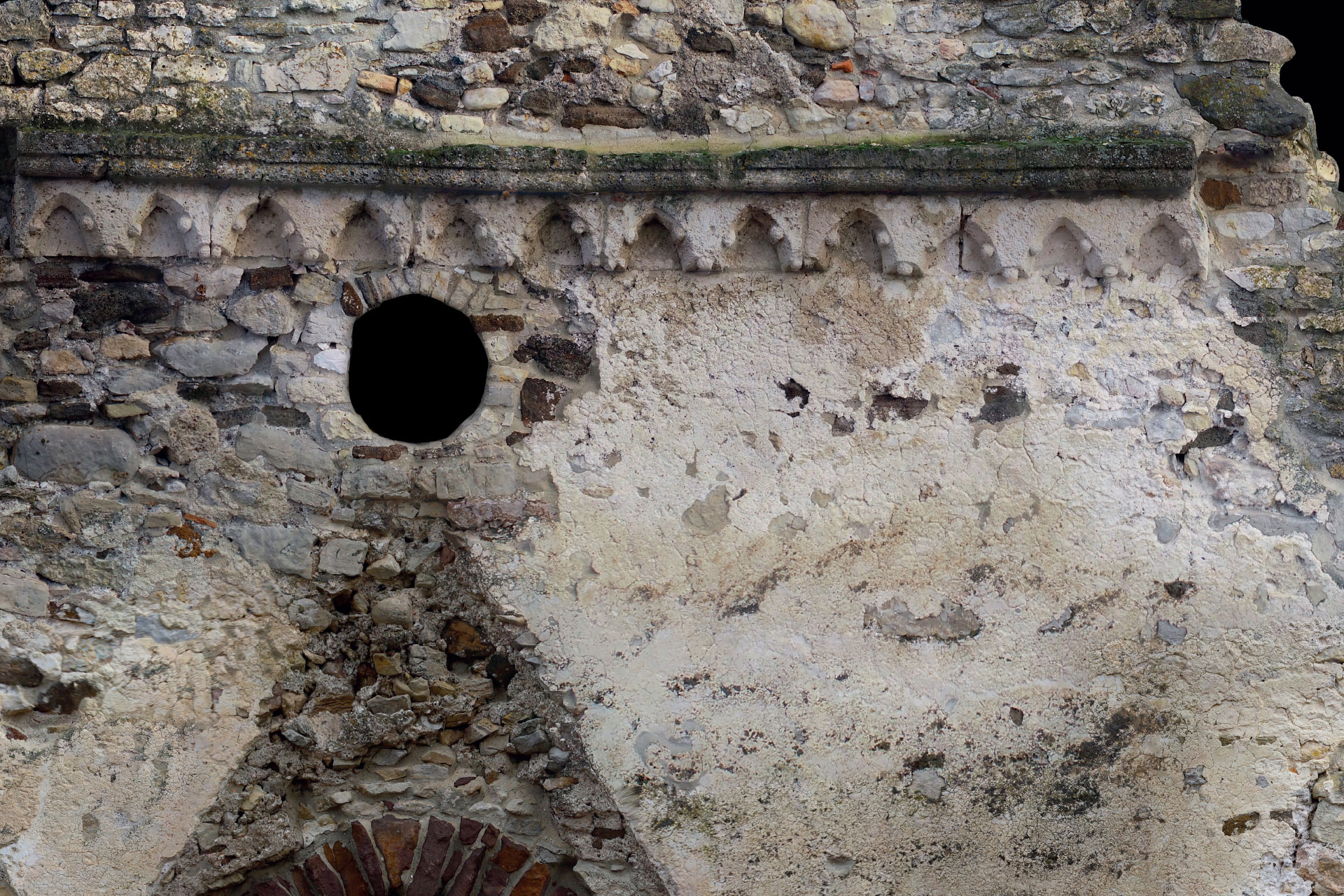
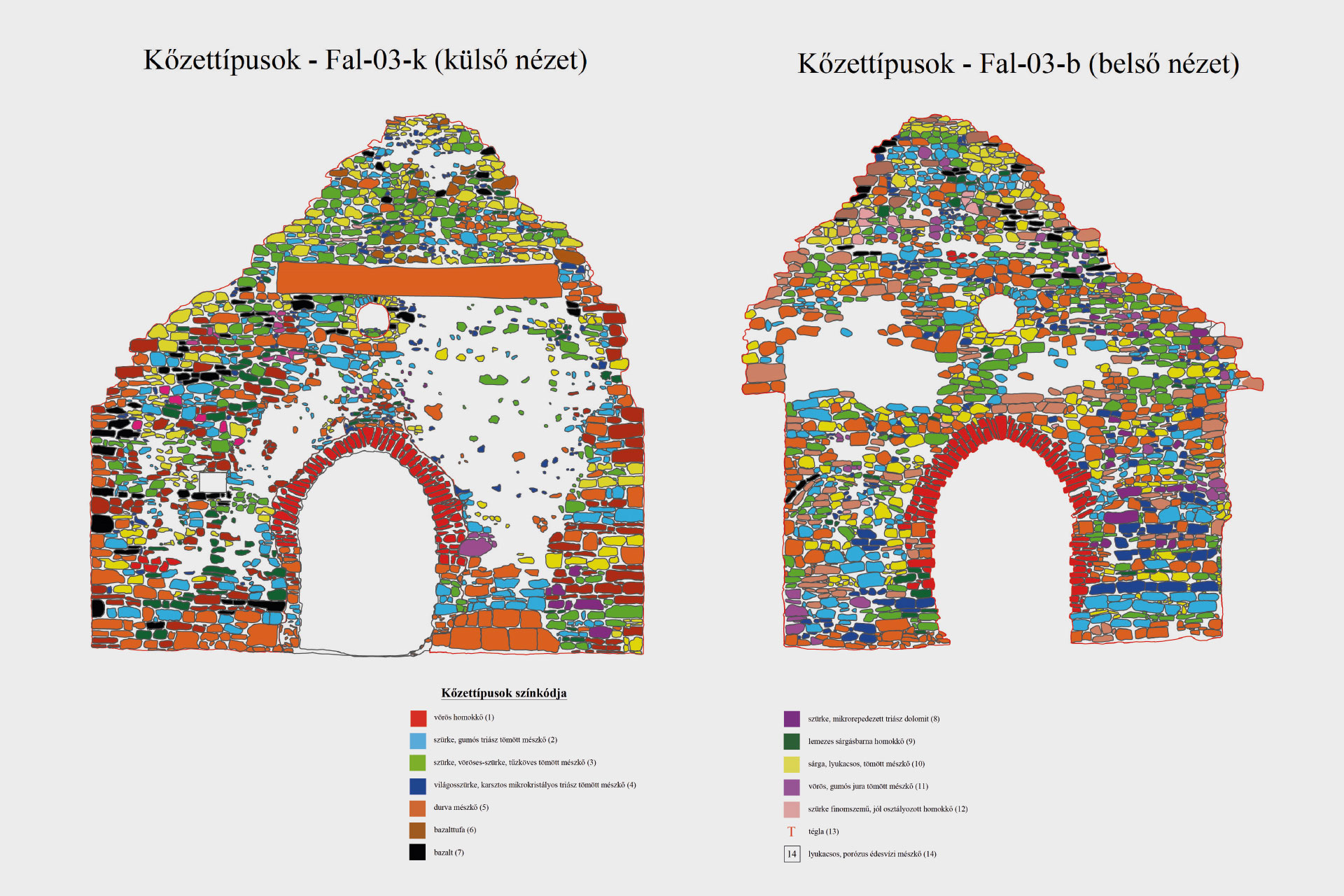
The heterogeneous wall fabric hides about 14 different types of stone, and the variety of stone material incorporated is a distinctive, character-forming element of the ruin church. In addition to basalt, basalt tufa, various types of limestone, dolomite and sandstone, the masonry also contains Roman carved stone elements and medieval brick fragments used as secondary materials. The remains of a church built on the walls of a Roman villa are a fine example of ruin continuity.
A historic site of two millennia
A ground penetrating radar geophysical survey of the monument was carried out as part of the restoration programme. The research has produced significant new scientific results. The former surrounding wall of the church has been identified. The existence of a large villa complex, measuring 120 × 65 m, was confirmed and dated to the Roman period on the basis of its typology and the earlier finds. At the northern end of the former building was an apse- shaped reception hall with an inner courtyard and a symmetrical layout. To the west of the villa building, simpler outbuildings were identified, and to the south-west of the spring a two-storey building extended with apses. To the east and west, the villa farm may have had several more buildings, and the Roman brick tombs found in the neighbourhood certainly belonged to this area.
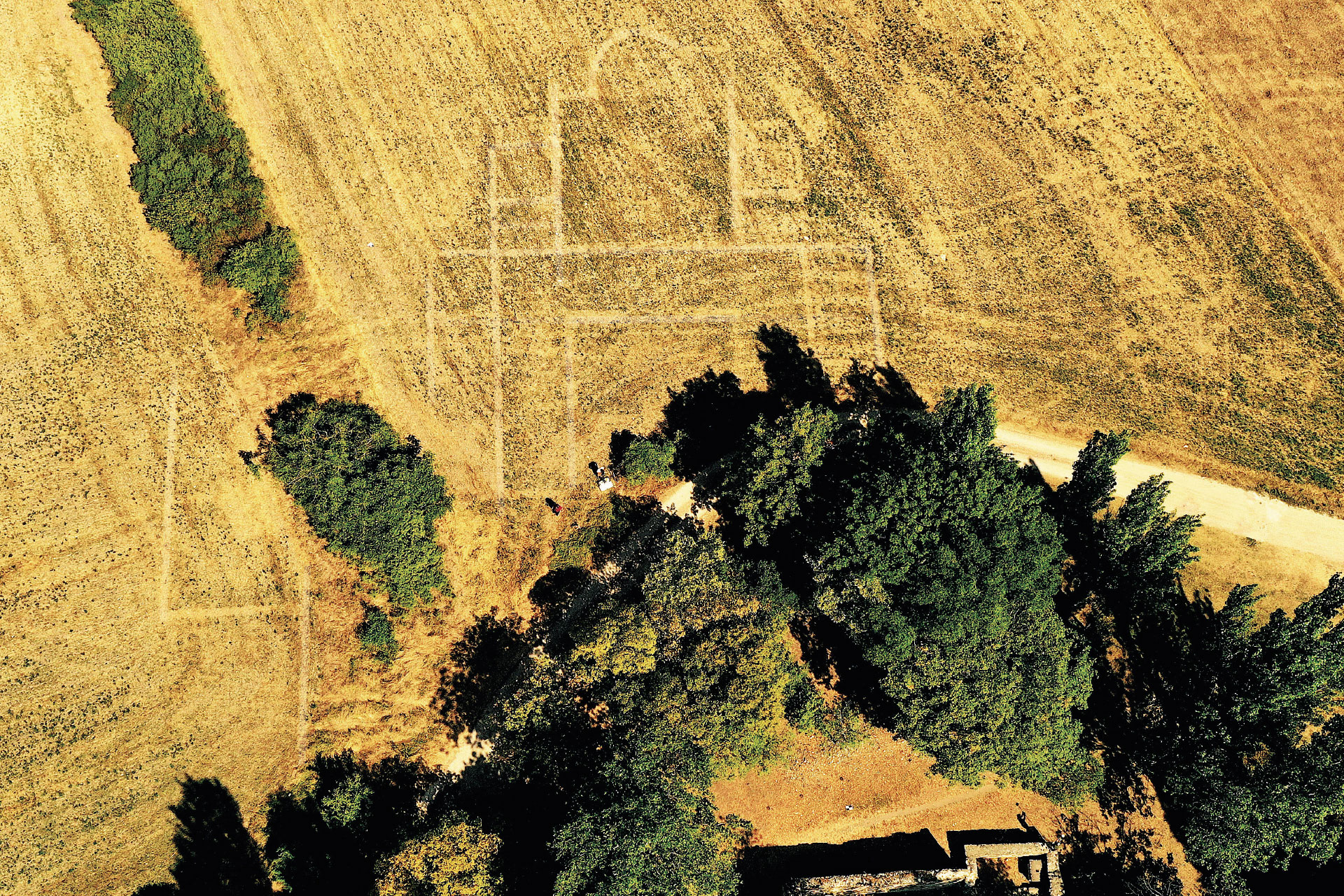
One of the most striking features of the walls excavated below ground level around the ruin is a building with three apses, with a square central space once connected on three sides by a semicircular apse. This type of building had originally a popular spatial design in Roman imperial architecture (especially baths) and later became a characteristic form of ancient Christian churches. The identification of the exact function of this building, on which a medieval church was built with exactly the same orientation about a thousand years later, raises fascinating questions.
Perhaps the ruin site has been passed down through several cultural historical periods as a space with sacred functions?
The outbuilding in the south-western part of the complex is even more interesting. In three of its rooms, a ground-penetrating radar survey revealed raised floor levels, indicating the existence of underfloor heating (hypocaust). This, together with the presence of at least two artificial water pipes, some 20-30 cm wide, running into the building, suggests that it was a building with bathing function. One of the water pipes branches off towards the spring, so it cannot be ruled out that the spring is a surviving outflow from the former baths.
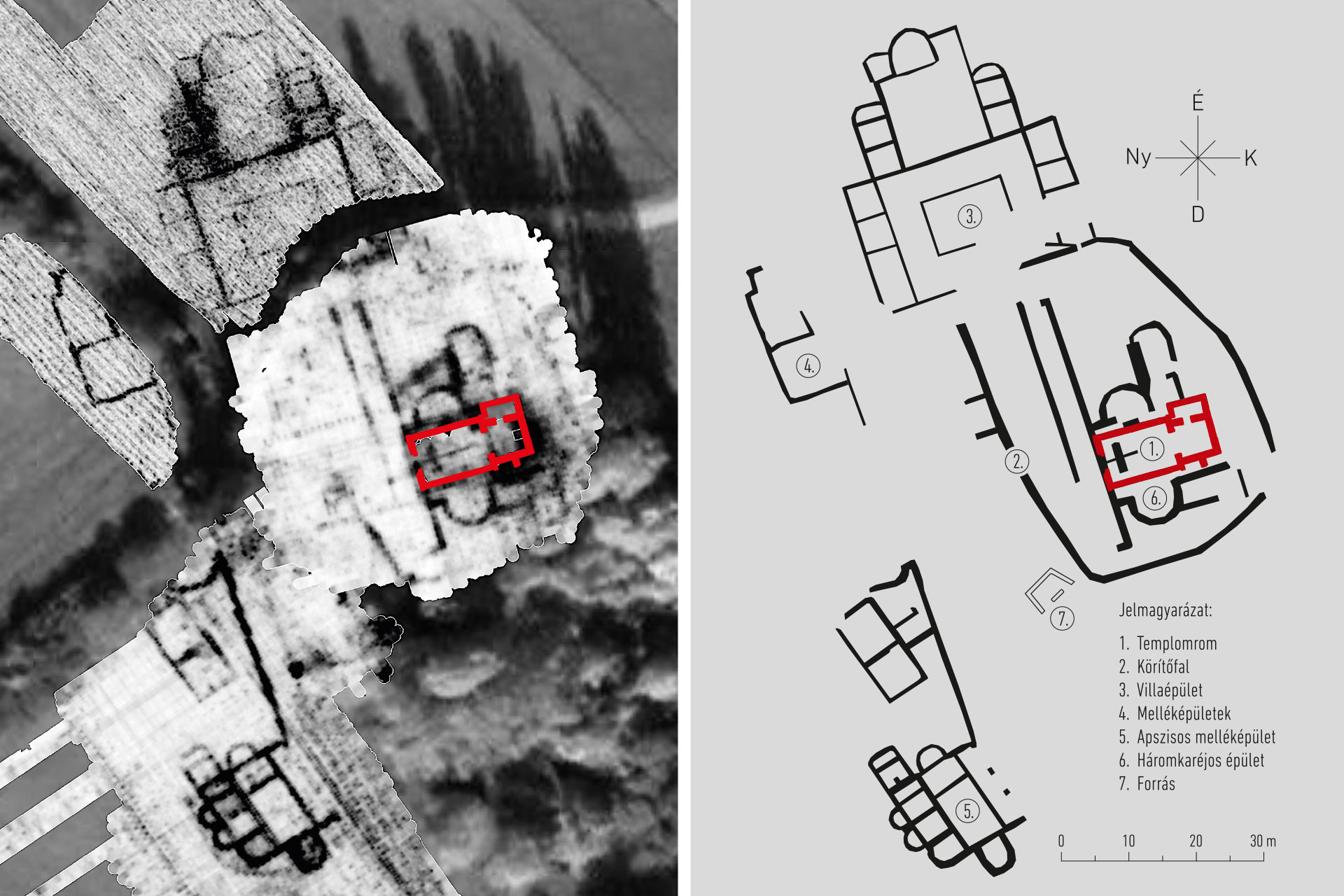
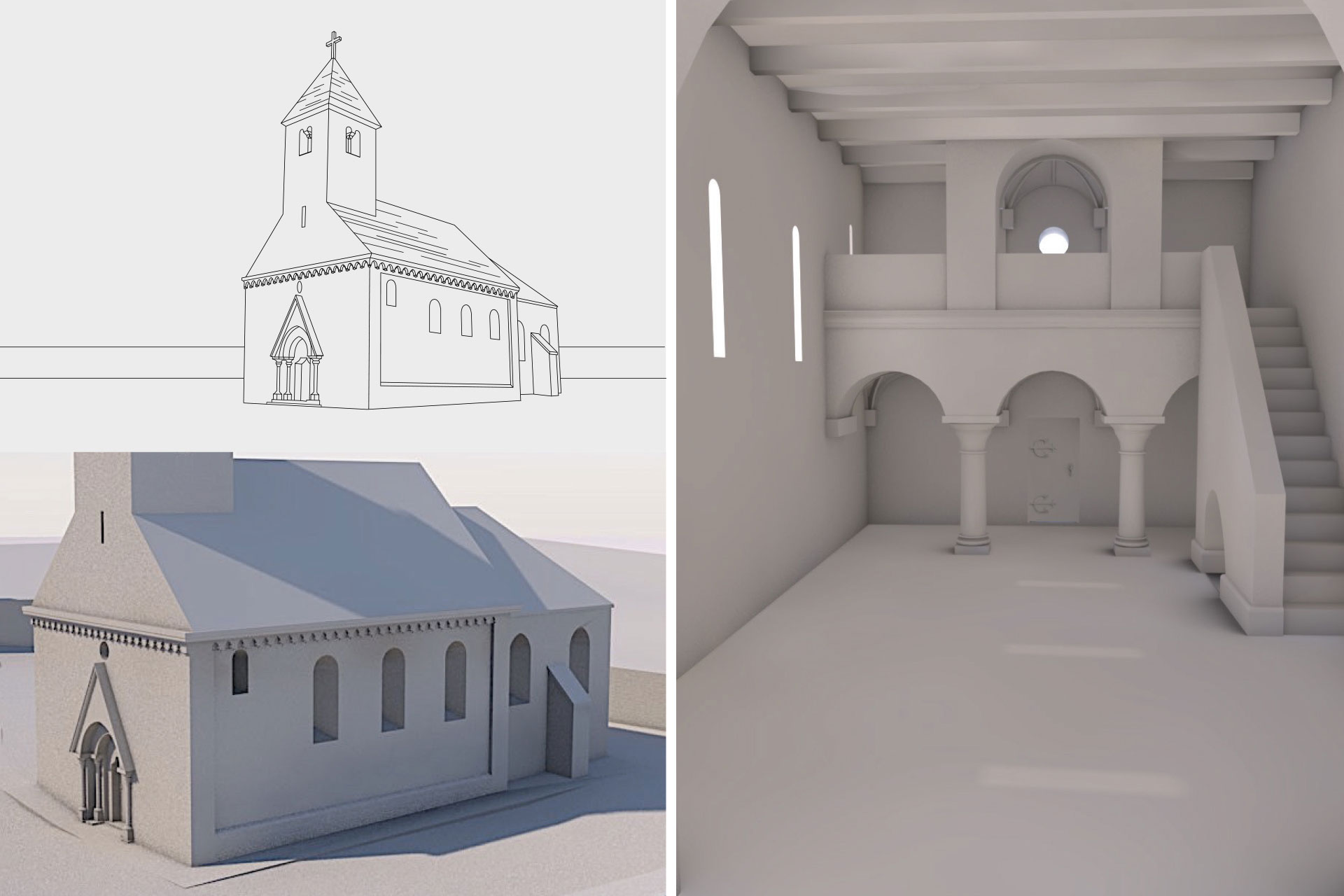
ROM VÁNDOR (RUIN ROVER)
The primary objective of the renovation works carried out in 2023 under Market Építő Zrt.’s ROM Vándor corporate social responsibility programme is to preserve, present and promote this unique ruin monument in a dignified manner. The basic principle of the design concept is the technical renovation of the ruin, the preservation of the aesthetic and historical values of the poetic ruin, the harmony between the ruin and the landscape, the development of small-scale contemporary additions to enhance the value of the ruin, and the architectural/landscape design presentation of the research results. As part of the renovation, the original medieval plasterwork of the ruin was restored and the carved stones of the arcature were conserved. The walls, which were in poor condition and had lost their solidity, were dismantled and rebuilt with original stones, using the “programmed anastilosys” method, in a historic mortar, according to the properties of the original wall fabric. During the preparation, several new and significant scientific results were obtained and used in the restoration.
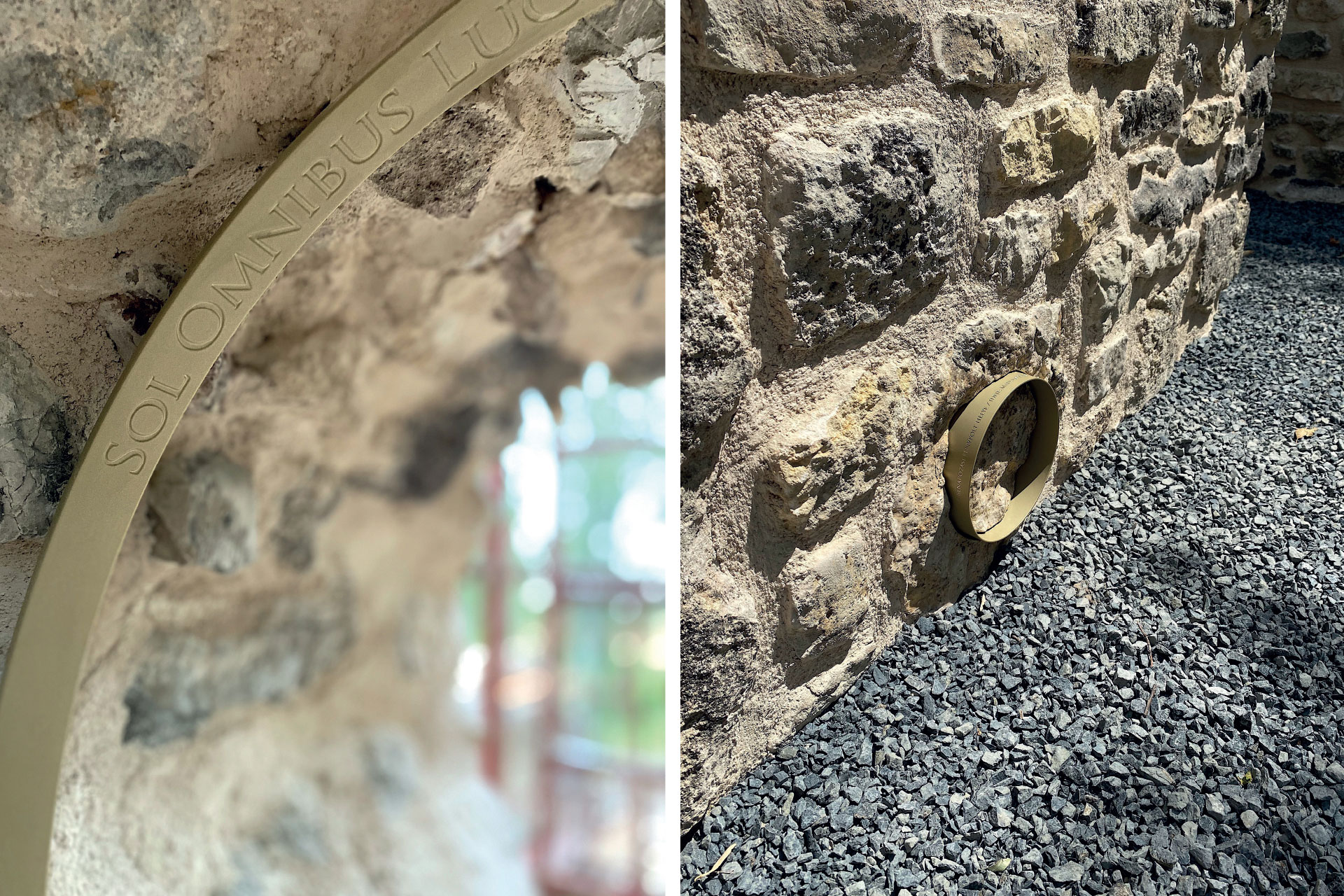
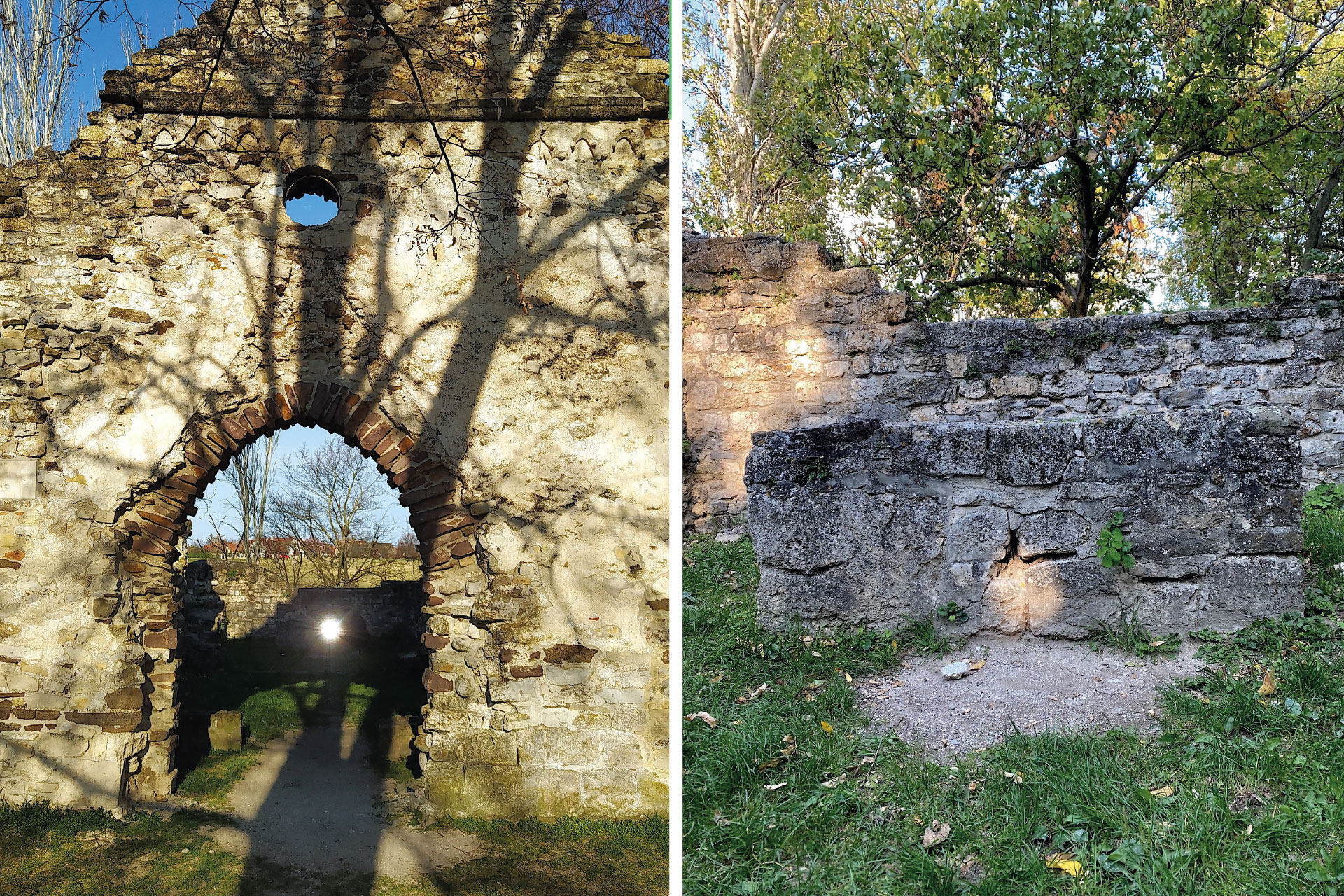
The path of light and its role as a space marker
Each monument requires different intervention. As part of the concept, each ruin site is assigned a “message” based on a central element, in line with the history and identity of the building. In the case of the church ruins in Kövesd, the central element was light, or more precisely the message of the “path of light”.
SOL OMNIBUS LUCET,
that is
THE SUN SHINES FOR EVERYONE…
A comparison of the diurnal motion of the sun and the orientation of the church, which was part of the design, produced unparalleled results. During the vernal and autumnal equinoxes, the sun shining through the stone windows of the façade in the late afternoon falls on the high altar. In reference to this, a metal ring with a Latin inscription “SOL OMNIBUS LUCET”, meaning “THE SUN SHINES FOR EVERYONE”, was placed in the inlay of the window opening, while the ring was paired with a mark on the main altar frontage to indicate the location of the equinox spot. The two endpoints brighten up at the same time on these special days, reconstructing and illustrating the sacral, locative role of light.
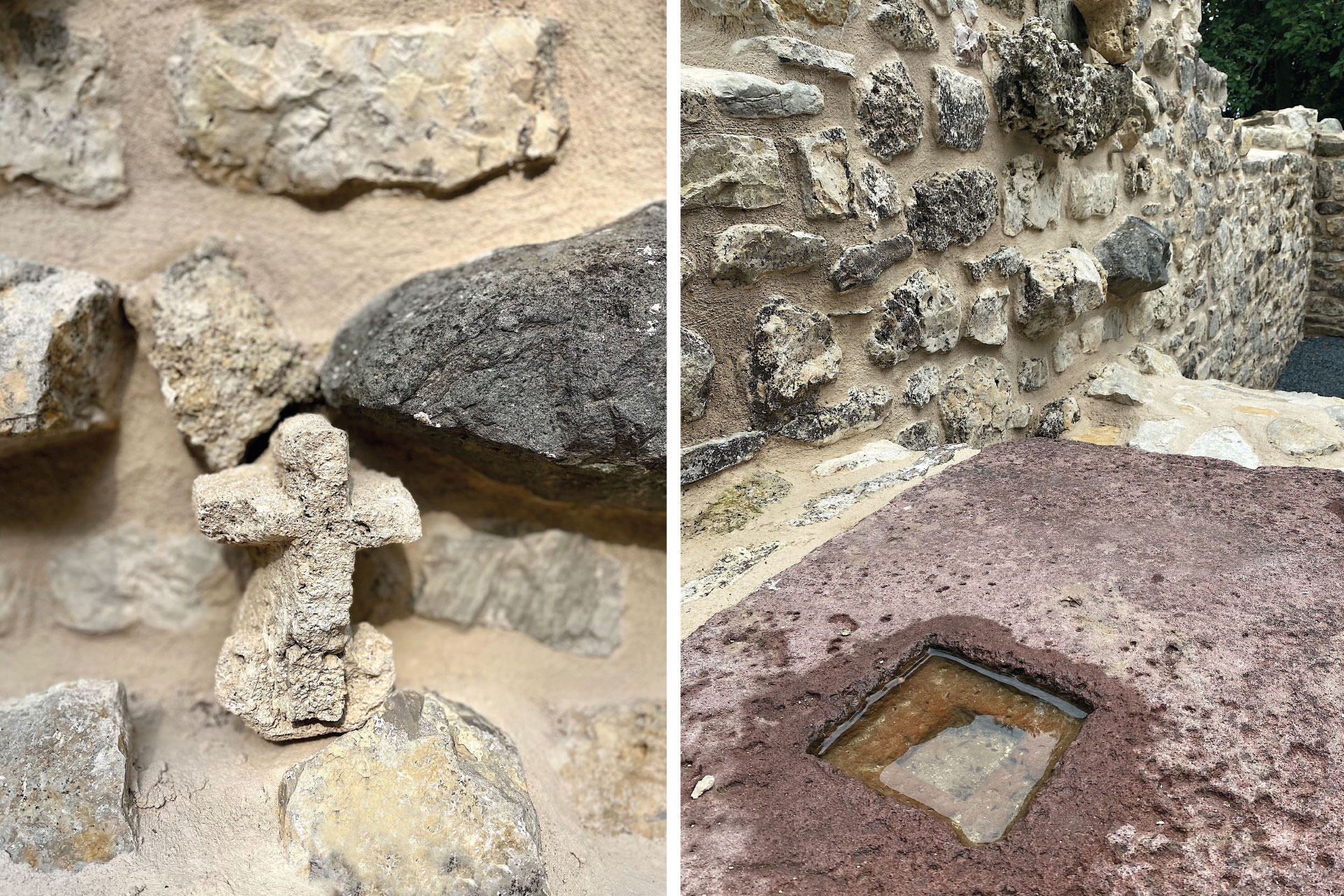
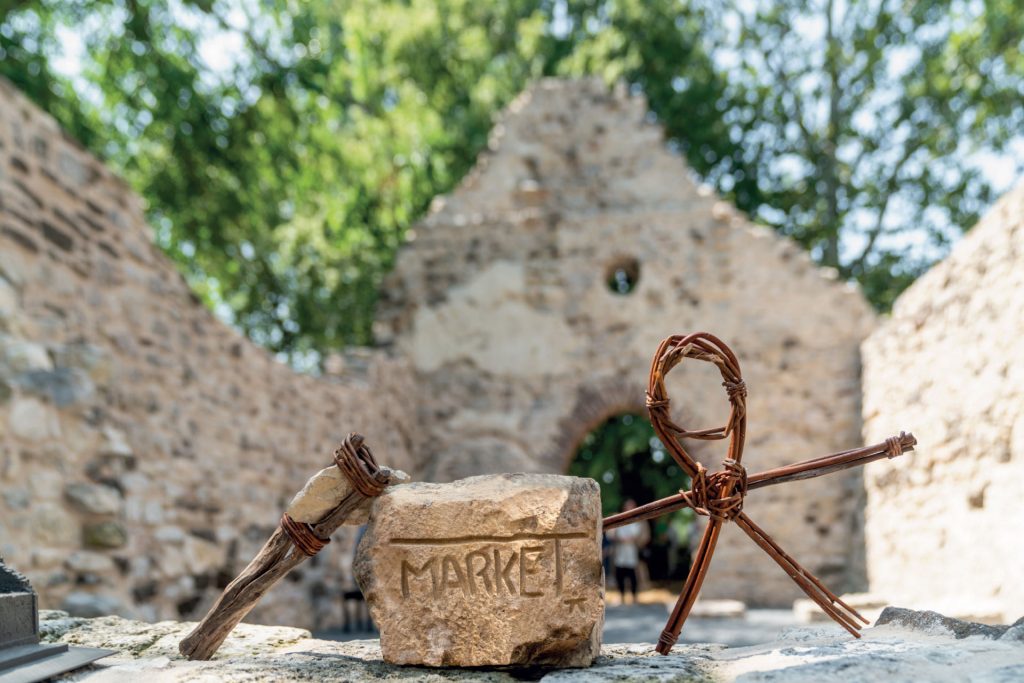
The space of silence
The restrained contemporary additions enhance the sacral continuity of the ruin church, the main elements of which are:
- The custom-made artificial stone bench in the sacristy is a means of private meditation, of “withdrawal”.
- Two artificial stone candle holders placed in the interior of the church collect the previously dispersed candles in an orderly form, providing a dignified space for the ceremony of “light”.
- The north wall of the sacristy contains a special object – a ruin log – made of 99% stone dust. Each Rover can write and draw in it at will, sharing their thoughts with the community of visitors to the ruins.
- The threshold of the church is not known, so a metal ledge has been placed in the present opening at the edge of the internal crushed stone pavement to support it.
- As part of the landscaping, the Roman altar stone has been reinstalled in the area of the former building with three apses (cella trichora).
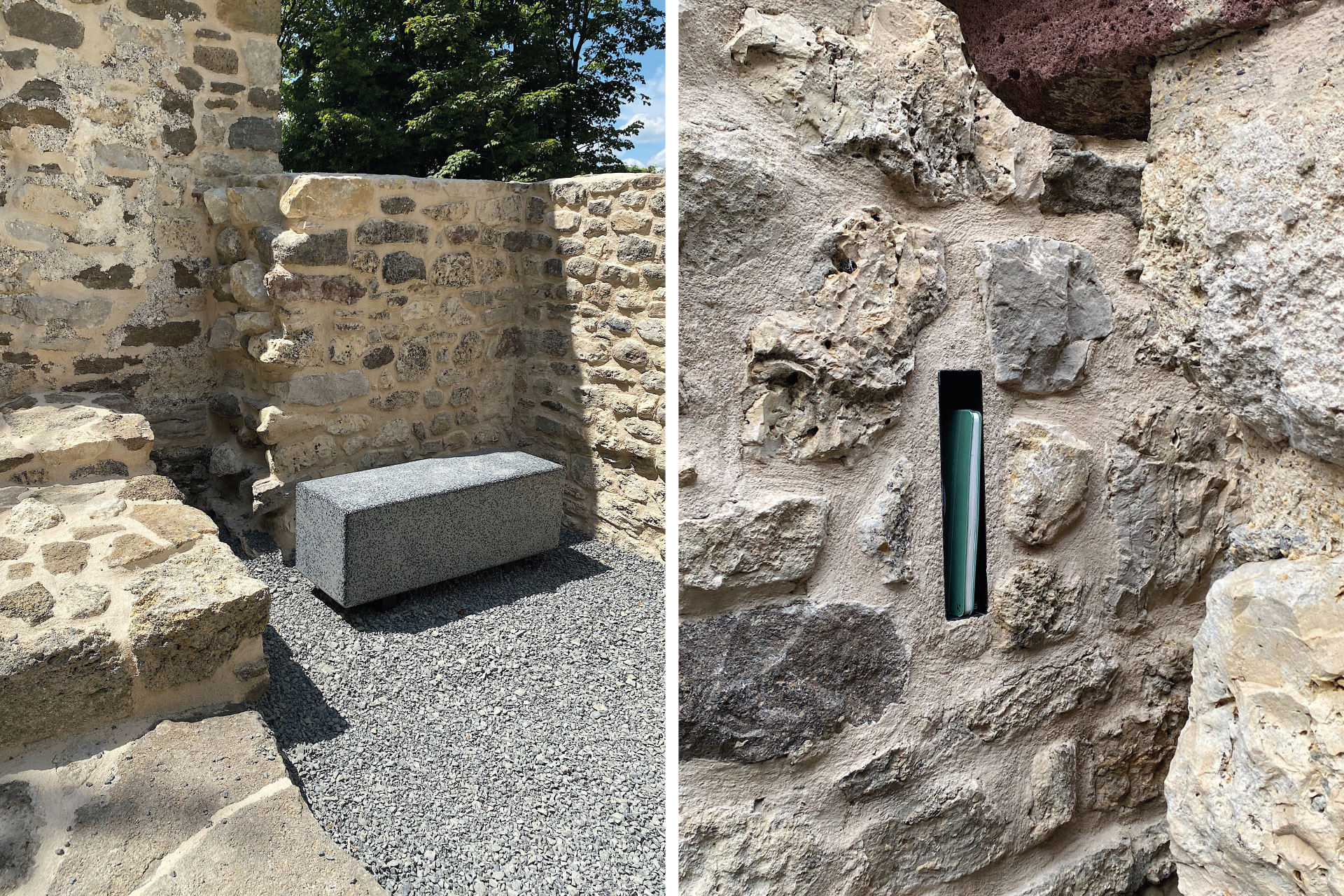
Archaic use of space
The trail of the former medieval church’s perimeter wall and entrance gate have also been identified and represented by landscape architectural tools. Along the outer contour of the cemetery wall, a hand-woven wattle fence was built using traditional techniques for a length of about 160 metres. This landscape element again separates the inner sacred space of the church from the outer space of the profane world. The perimeter wall used to play a major role, physically delimiting the sacred area of the church, marking out and protecting the burial ground, but it also had symbolic significance: there could be no discord or disturbance within the walls. It is an enduring spiritual legacy and message for all communities.
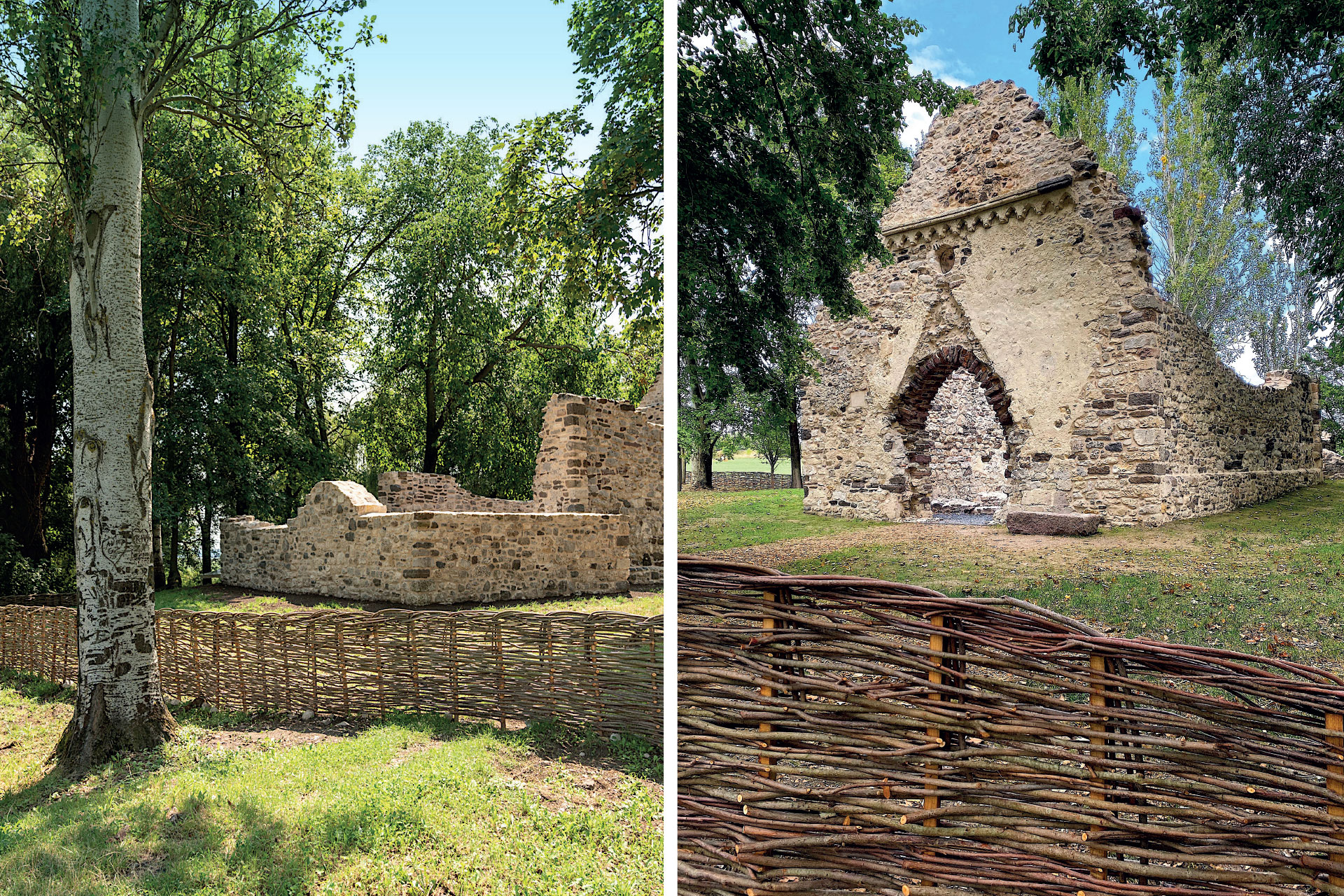
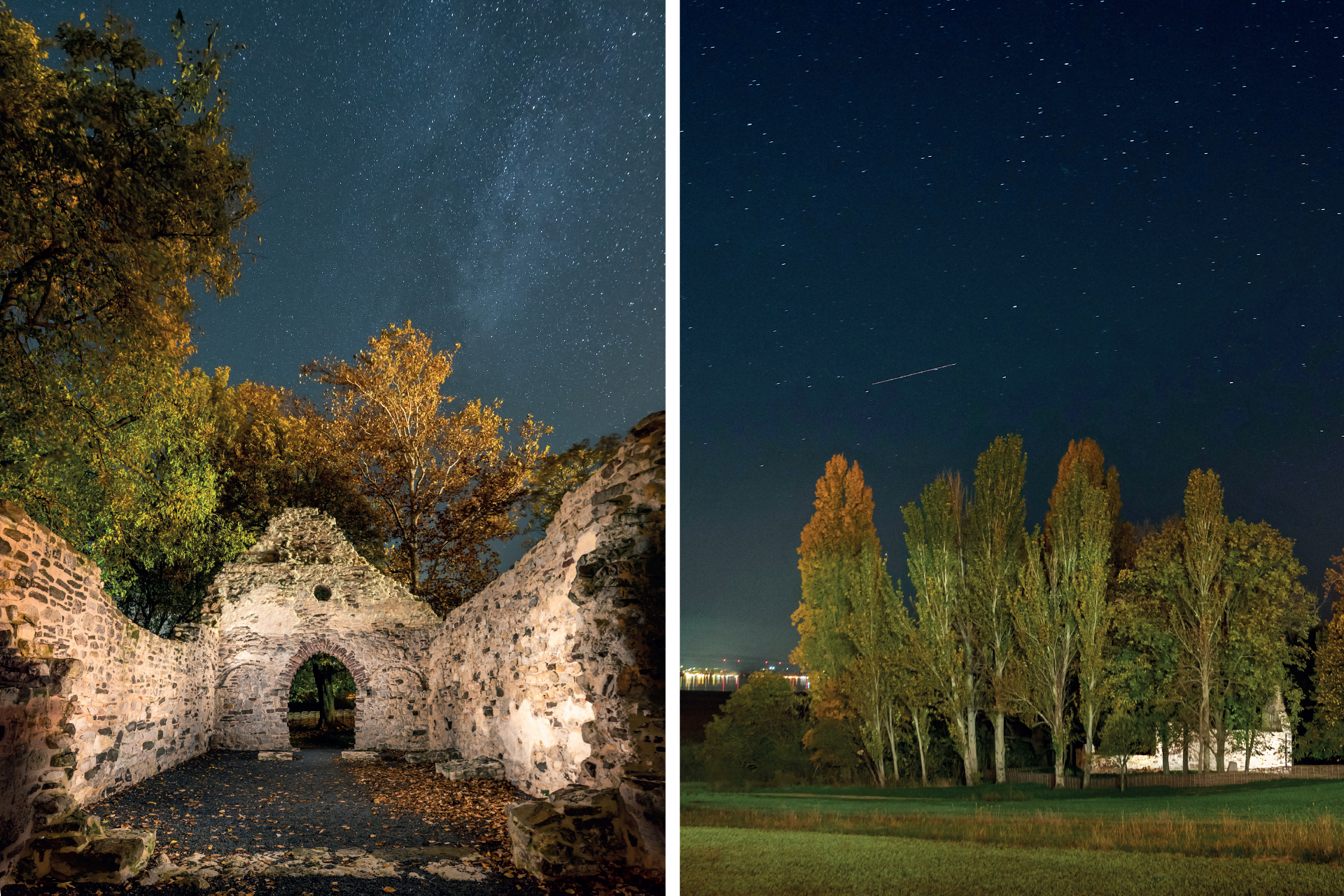
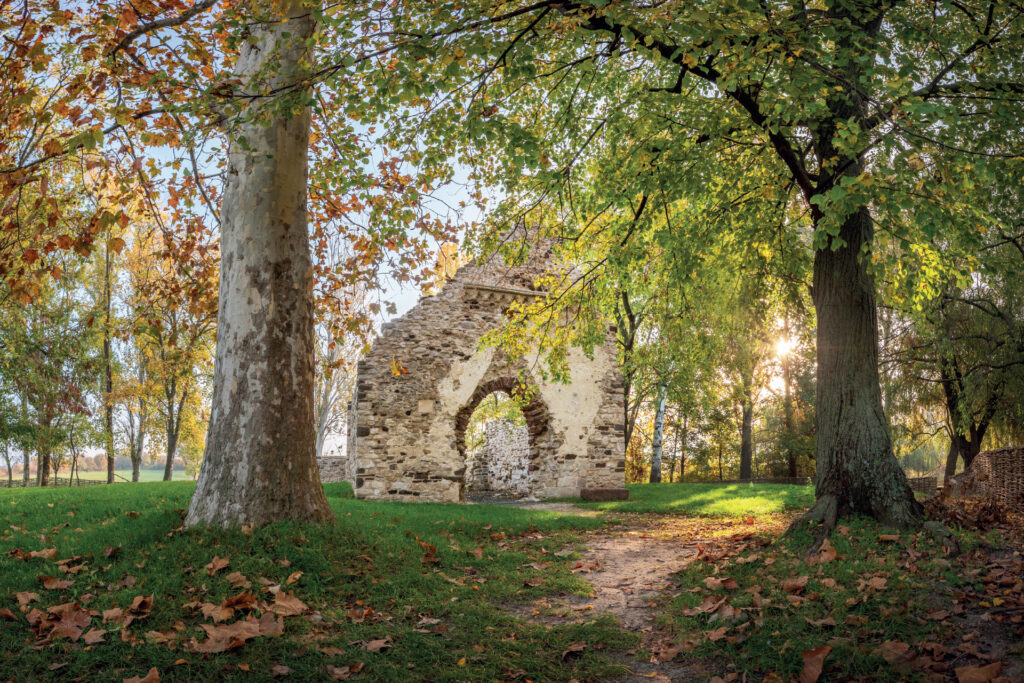
The “ruin rescue programme” pays attention to informing and mobilising local communities, in consultation with local governments and through forums with local bodies and residents.
Company employees can get involved in the works during a “volunteer day”. In Aszófő, around 30 volunteers helped with the construction of the wattle fence and the finishing touches to the environmental landscaping. They also took part in workshops on traditional wattlework and stone-carving techniques.
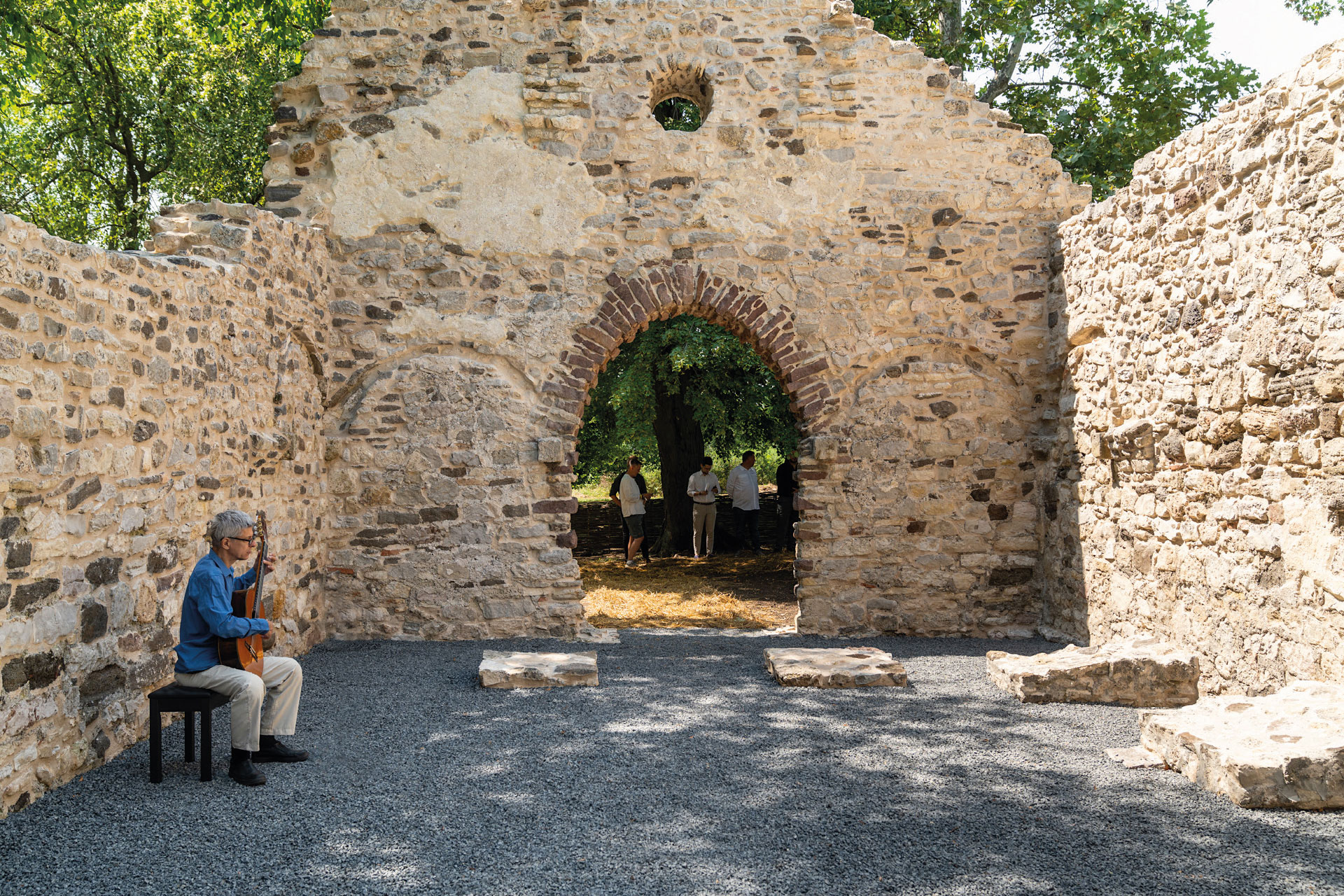
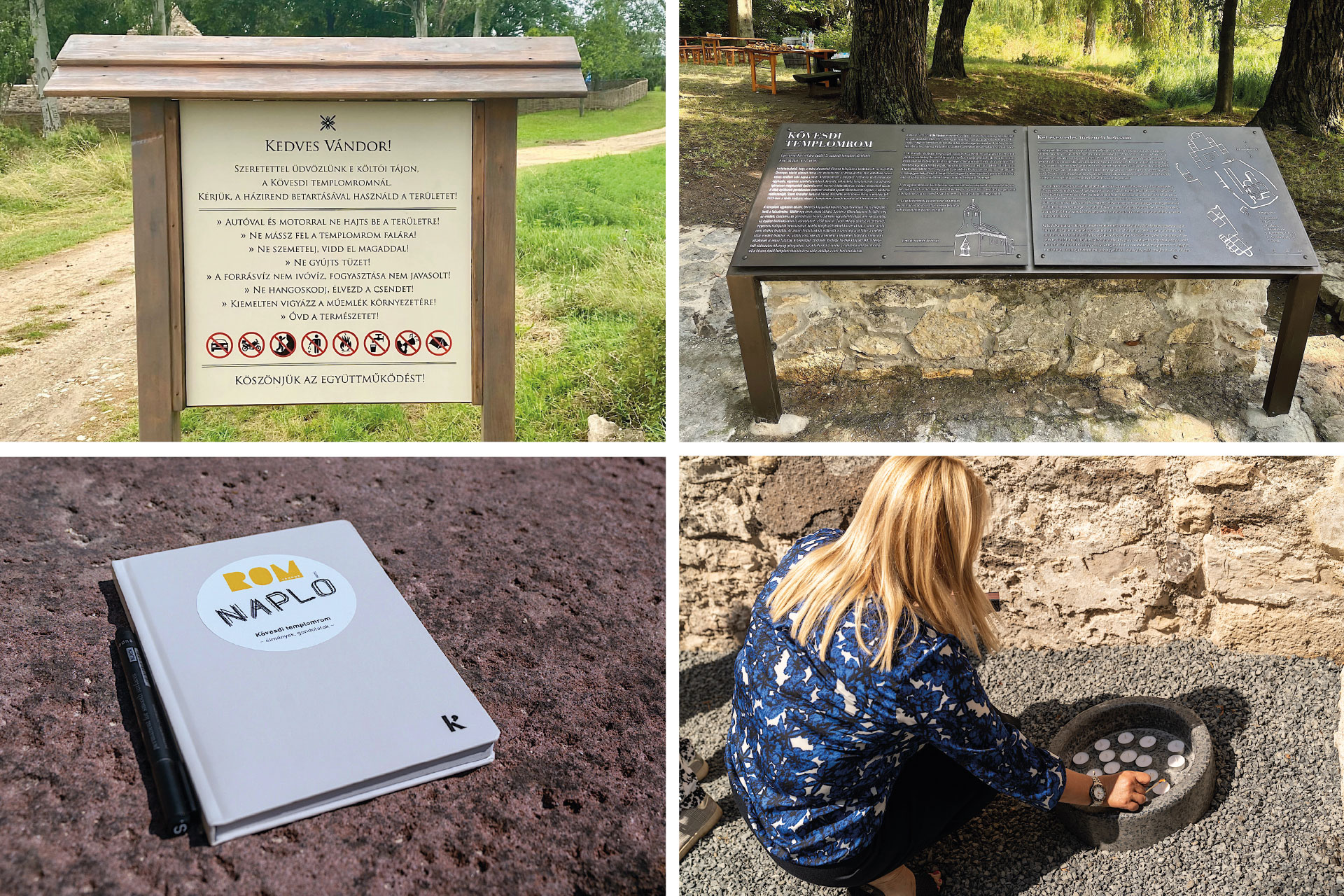
It is as if our current historical and economic situation is also calling us to rethink our existing values, our intellectual resources, to look at them in a different way. We don’t necessarily have to travel to an exotic place, let’s discover the exotic within our borders, which may be just a crossroads away from us. In our world of seconds, buildings that are almost 800 years old seem eternal, and we want to preserve and enhance their value, while inspiring hikers, trekkers and pilgrims with a ruin experience.
This special historical site is our unique heritage; its worthy preservation is a common task.
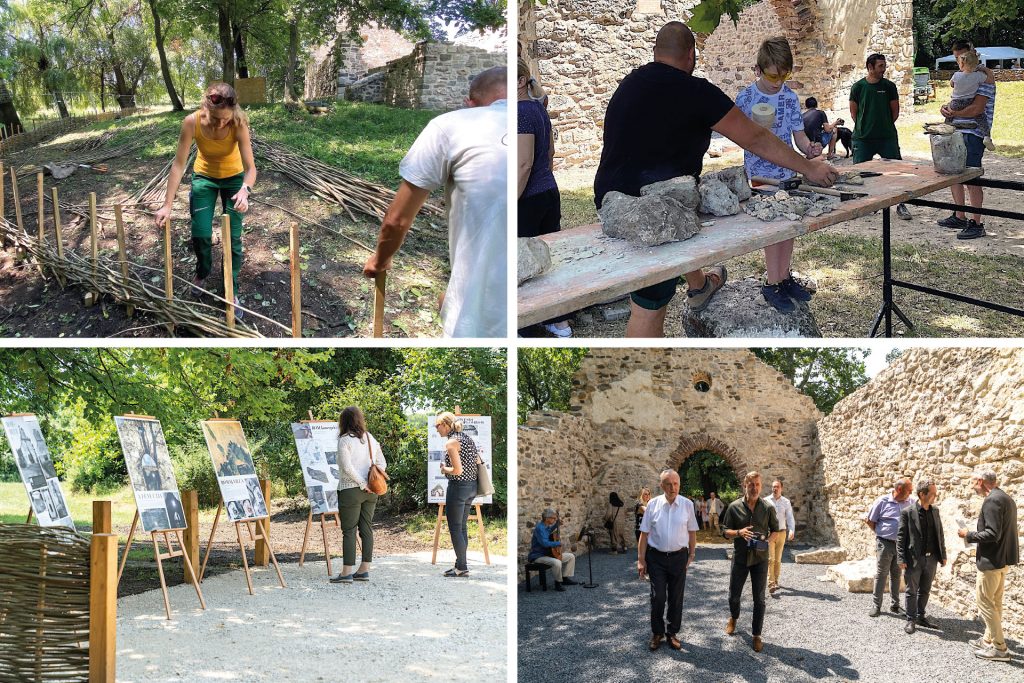
The inauguration of the ruin church was widely publicised in the press, which helped to spread the news of the renewal to a wider audience.
https://epiteszforum.hu/a-kovesdi-templomrom-es-kornyezetenek-helyreallitasa
https://www.octogon.hu/epitoipar/megujult-a-kovesdi-templomrom-rom-vandor/
https://magyarepitok.hu/mi-epul/2023/08/uton-a-rom-vandor-ujabb-templom-szepult-meg-a-market-munkajaval-aszofon
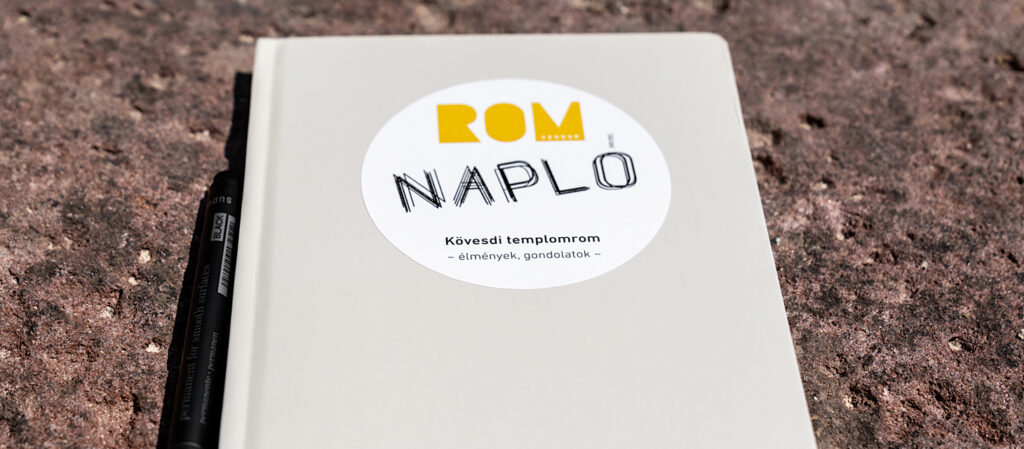
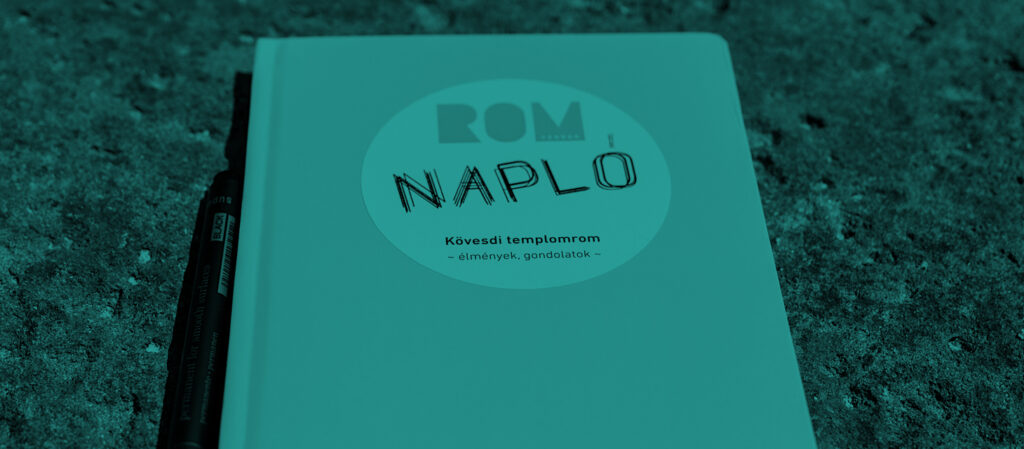
ROM VÁNDOR (RUIN ROVER) PROGRAMME 02 / ASZÓFŐ
Main contractor: Market Építő Zrt.; Programme director: Péter Belecz; Project manager: Tamás Krenn; Site manager: Tamás Szabadosi; Technical adviser – horticulture: Mária Windisch; Technical estimation engineer: Ágnes Jung
Partners
Design: Architect Bálint Kelemen (KÖZTI); Landscape and environmental design: Gabriella Havassy (KÖZTI); Chief structural engineer: Péter Váczi (KÖZTI); Scientific documentation: Miklós Rácz; Rock-hammer/mortar analysis, wall diagnostics: dr. Ákos Török (BME); Restoration: Zsófia Szabó, Gábor Bánfi; Stone sculptor-restorer expert: Vilmos Osgyányi; Professional consultant: Ádám Arnóth (monument expert); Archaeological partner: Salisbury Régészeti Kft.; 3D point cloud, orthophoto: Tibor Szappanyos / Kvalitron Kft.
Execution
Market Építő Zrt., Market Épületszerviz Kft., OKM Kft., Gábor Bánfi restorer, Edvárd Takács landscape and garden engineer, Harappa Kft., T-Brass Kft., Ornamentika Kft.


